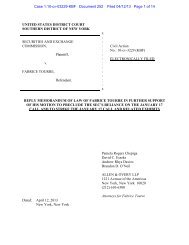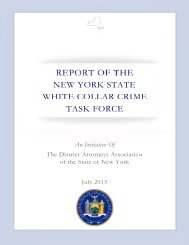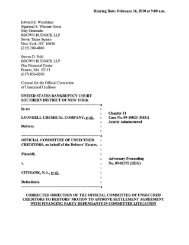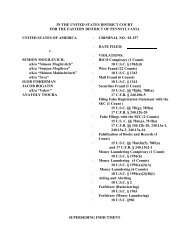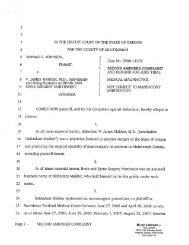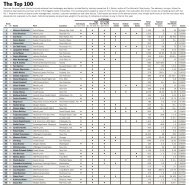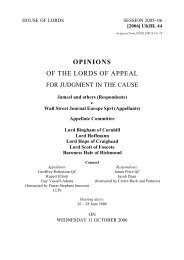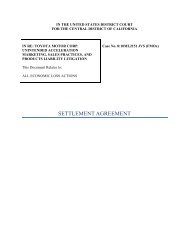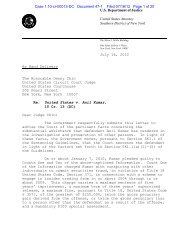Salz Review - Wall Street Journal
Salz Review - Wall Street Journal
Salz Review - Wall Street Journal
You also want an ePaper? Increase the reach of your titles
YUMPU automatically turns print PDFs into web optimized ePapers that Google loves.
<strong>Salz</strong> <strong>Review</strong><br />
An Independent <strong>Review</strong> of Barclays’ Business Practices<br />
186<br />
For example, imagine a group who come together for the first time. The nominated leader<br />
of the group typically reminds the group what they are there to achieve and may propose<br />
that each group member introduce themselves as a way to get started. In response to this<br />
request, another group member may suggests an alternative or an addition – for example<br />
suggesting that group members say a bit about their reason for attending. If the group<br />
accepts this suggestion, a norm is established that it is permissible to question the authority<br />
of the leader with a suggested alternative. Whether the group accepts or rejects a suggestion<br />
is important in terms of setting a precedent for matters of authority – whether leadership is<br />
shared or located in one individual. Once matters of authority are resolved, the group turns<br />
typically to norms around intimacy.<br />
Turquet (1973) used the term ‘fusion’ to reflect the strong emotional need to feel<br />
comfortable and at ease within a group. The degree of intimacy in a group is a function of<br />
the intimacy needs of individual group members. Some members resolve conflicts by<br />
avoiding intimacy, others by seeking it and attempting to maintain harmony at all costs.<br />
Norms about intimacy evolve around incidents that involve aggression and/or<br />
affection/affiliation. For example, if member A attacks member B (emotionally or<br />
intellectually), it is what the group does after the attack that creates the norm. The group<br />
may ignore the attack and move on, or someone may suggest that attack is an inappropriate<br />
form of behaviour. Similarly, if there is a hostile interaction between two members, the<br />
manner in which the group handles the expression of feeling matters. If group members<br />
help to facilitate resolution, then norms get built that feelings can be expressed and worked<br />
through; if feelings are ignored and conflicts brushed aside, this pattern of interaction<br />
becomes the norm.<br />
Cultural norms in groups are built through incidents and responses to them. Group<br />
members learn through their shared experiences the norms which are the most successful<br />
in helping the group to achieve a task (or lead to avoidance of failure). As groups mature,<br />
their cultural assumptions become stable and enduring. Challenging and changing group<br />
cultural norms, creates anxiety and instability. The quickest way for a group to become<br />
unproductive is to question its cultural assumptions because the challenge re-arouses the<br />
primary anxieties that the cultural norms dealt with when the group was formed.<br />
Cultural norms are created and sustained by many interlocking elements which mutually<br />
reinforce. People rapidly come to know and spread cultural norms as the accepted and<br />
expected way to behave. Normal behaviour creates expectation – and from expectation<br />
derives trust. We trust those who are similar to us, those who we are closest to and those<br />
with whom we share common goals. 278 Because of these key elements of how groups<br />
function, how behavioural norms and the bonds of trust are created, culture once created,<br />
is resistant to change. Cultural stability sustains organisational identity and provides an<br />
important sense of psychological security to organisational life.<br />
Delivering Cultural Change<br />
Paradoxically, the most important aspect of delivering cultural change is not to focus<br />
explicitly on changing the culture, but rather to focus on what the exact nature of the<br />
278<br />
Roderick Kramer, Collective Trust within Organisations: Conceptual Foundations and Empirical Insights, 2011.




